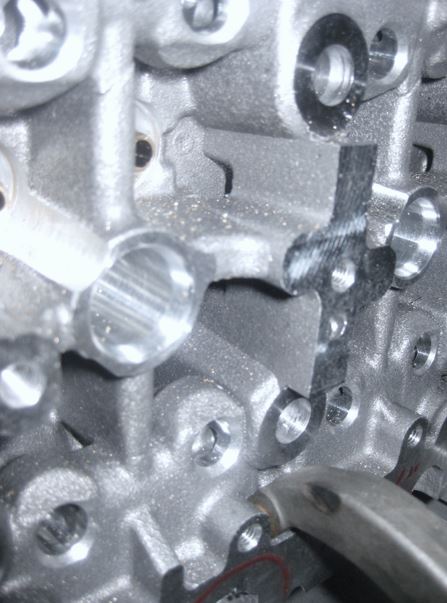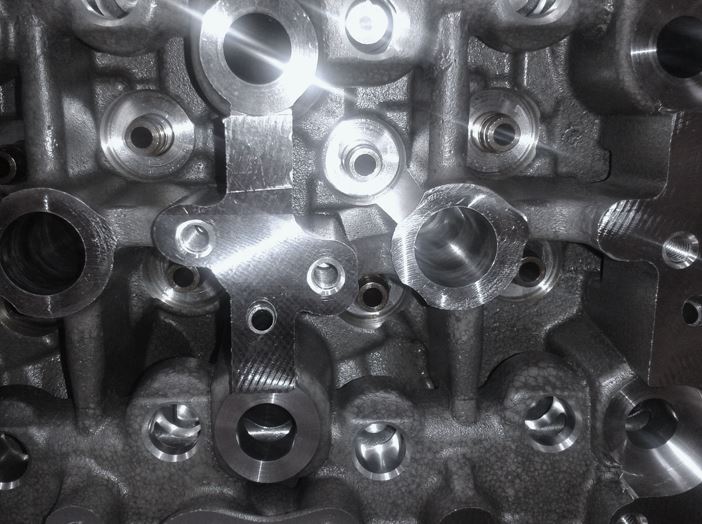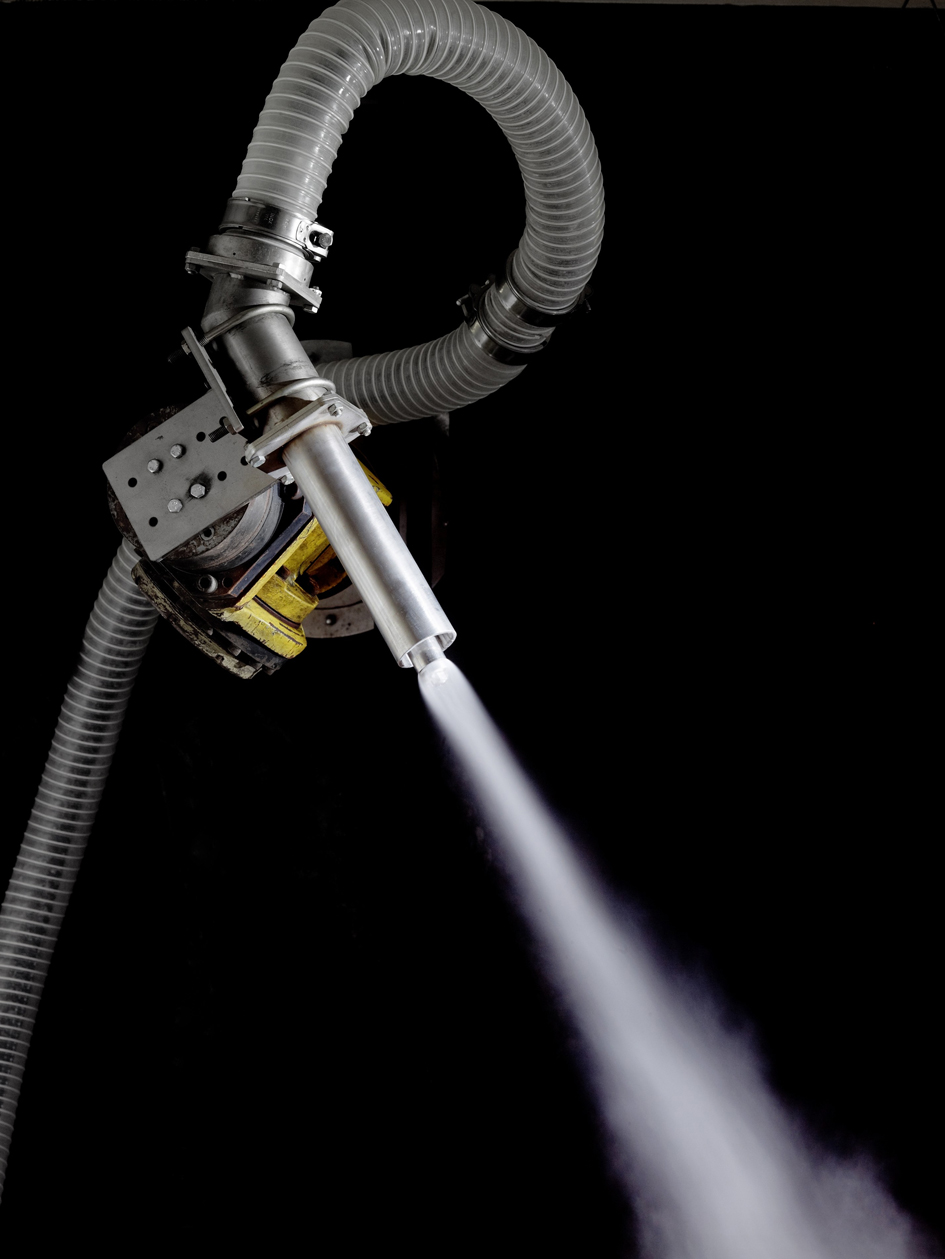Surface Processing
Optimizing pre- and intermediate cleaning of powertrain parts in machining lines
Steam, instead of compressed air, is also efficient with MQL processes
In automotive engine and transmission manufacturing lines, cleaning parts between machining steps is now state-of-the-art practice. Often this is done with compressed air, which needs to be generated at a high expense of energy. One favourable alternative from the perspective of operating costs consists in steam cleaning using Ecoclean's EcoCsteam system. This solution can also be integrated into production lines for pre-cleaning parts machined by the minimum quantity lubrication (MQL) method. The result will be a tangibly increased bath life in downstream aqueous cleaning.
Minimum quantity lubrication (MQL) stands for a trend that is rapidly gaining ground in the manufacture of aluminium and steel automotive powertrain components. This is hardly surprising, since the ultra-sparing application of a mix of fine oil droplets and compressed air in machining, e.g., crankcases and crankshafts, cylinder heads and connecting rods provides substantial energy savings. It also eliminates the costly and complex functions associated with the supply, disposal, reconditioning and storage of coolants. A further advantage of MQL is that it improves work convenience by avoiding personnel exposure to heavily oil-laden air. In all, the technique provides many benefits underpinning the automotive industry's advance towards sustainability.
But where there is light, there is also shadow. In MQL processes, the downside lies in part cleaning. The lubricant residue on the workpiece, although minimal in quantity, sticks extremely to the surface, gluing chips and particles in place, as it were. This effect calls for a significant extra effort in the subsequent aqueous cleaning cycle, resulting in a greatly reduced bath life. Instead of lasting four weeks, as is common with machining processes based on standard coolants, the bath fluids must be changed after as little as one week in the case of a MQL process.
This translates not just into higher cleaning costs but also into reduced plant availability. It this therefore only logical that OEM and powertrain part manufacturers should be aiming for a solution to minimize contaminant carryover into the cleaning system so as to prolong the service life of the cleaning bath again.
Efficient pre-cleaning using wet steam
The compressed air systems commonly used for in-process cleaning are virtually ineffective against such slight but highly adhesive contamination. An efficient alternative is to pre-clean the workpieces with Ecoclean's steam-cleaning system EcoCsteam. It relies on the use of hot wet steam in conjunction with a high-velocity airflow. Since the steam-cleaning operation is easy to automate, the technology can be integrated directly into the manufacturing line as a compact modular system, providing pre-cleaning within the specified cycle time.
Unlike conventional boiler-type systems, the EcoCsteam operates on the principle of flow-through water heating. Water is passed through a pipe system equipped with heating coils which heat it to the optimum temperature for dislodging the MQL process residue. The steam's moisture content is likewise adapted to the contamination. This special steam generating method not only minimizes water demand to a mere 250 – 300 milliliters per hour; it also provides steam of unchanging quantity and quality, and with constant properties in the cleaning operation. For enhanced cleaning performance, a cleaning agent may be added. The high-velocity airflow serving as a carrier and accelerating medium is produced by a turbo-fan. This causes significantly less operating cost than a compressed air system.
The water and steam throughput, heat input and air flow rates can be precisely adjusted by the EcoCsteam system's controller and are continuously monitored and adapted by the PLC.
Doubled bath life
In the EcoCsteam process, the transformation of water to steam occurs only at the nozzle outlet. Shrouded all around by the high-velocity airflow, the steam jet is then focused onto the contaminated surface. Upon impact, the wet steam modifies the viscosity of the MQL residue. The latter is atomized into ultra-fine droplets and dislodged from the workpiece surface by the airflow, along with particles and chips. The substances thus removed is fed to an integrated filtration and disposal unit. Here, chips are filtered out and collected in a separate container while the water can be reconditioned or discharged. Alternatively, the steam cleaning module may be connected to the user's own disposal system.
Tests have shown that, depending on the complexity of the given surface, at least 50% of the adhesive MQL residue can be removed by the steam cleaning process. The carryover of foreign matter into the cleaning system is thus cut by half. As a result, the service life of the cleaning bath is doubled. This leads to a tangible reduction in costs per part: Assuming that 50 per cent of the cleaning costs are expended on the disposal of used fluid as well as on chemicals, water and energy for new baths, the doubled fluid lifetime translates into savings of around 25 per cent per cleaned part.
Advantageous also in intermediate cleaning of coolant-contaminated parts
Optimum intermediate cleaning is also achieved between machining cycles using conventional coolants. Compared to solutions relying on costly compressed air, the EcoCsteam system saves operating costs. In addition, the steam cleaning technology requires less floorspace than a belt cleaning system and distinguishes itself by exceptionally short cycle times. Moreover, the cleaning process is carried out without chemicals, using only water with or without the addition of an optional corrosion inhibitor.
As an invariably clean medium, steam also opens up a number of further application options in the production of power train components. One example is the spotless cleaning of polished surfaces, e.g., of crankshafts or camshafts, prior to their visual inspection by an automatic optical image recognition system.
Author: Doris Schulz




